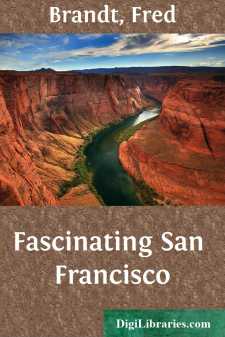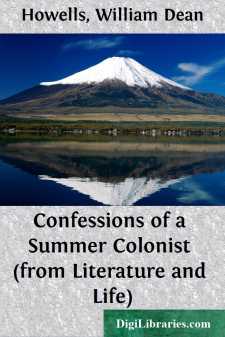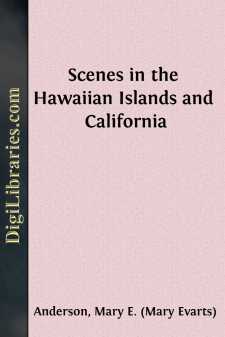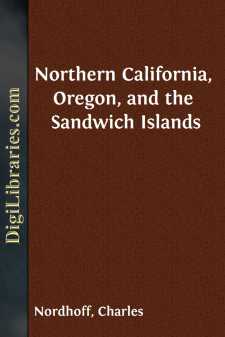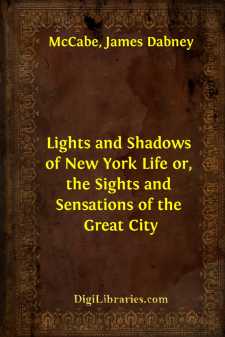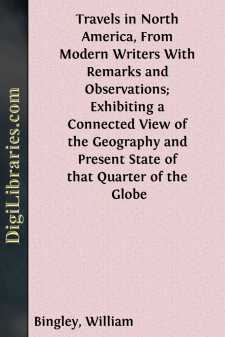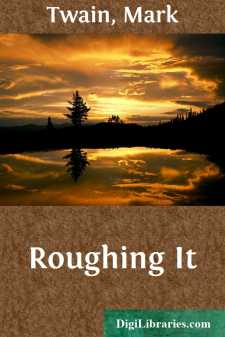Travel
- Africa 29
- Alaska 3
- Asia 46
- Australia & Oceania 26
- Canada 31
- Caribbean & West Indies 5
- Central America 1
- Europe 151
- General 39
- Maps & Road Atlases 1
- Mexico 10
- Middle East 18
- Polar Regions 7
- Reference 11
- Restaurants 1
- Russia 6
- South America 16
- United States
United States Books
Sort by:
by:
Fred Brandt
Foreword Enthroned on hills, San Francisco captivates the stranger who sees it from the Bay by the vivacity of its landscape long before revealing any of its intimate lures. Whether you approach in the early morning, when gulls arc wheeling above the palette of tones of the Bay, or at night, when illuminated ferryboats glide by like the yellow-bannered halls of fable, the buoyancy of San Francisco is...
more...
by:
Walter Besant
AS WE ARE AND AS WE MAY BE THE ENDOWMENT OF THE DAUGHTER. Those who begin to consider the subject of the working woman discover presently that there is a vast field of inquiry lying quite within their reach, without any trouble of going into slums or inquiring of sweaters. This is the field occupied by the gentlewoman who works for a livelihood. She is not always, perhaps, gentle in quite the old...
more...
In a certain sort fragile is written all over our colony; as far as the visible body of it is concerned it is inexpressibly perishable; a fire and a high wind could sweep it all away; and one of the most American of all American things is the least fitted among them to survive from the present to the future, and impart to it the significance of what may soon be a "portion and parcel" of our...
more...
California, which produces the maximum of scenery and the minimum of weather; California, which grows the biggest men, trees, vegetables and fleas in the world, and the most beautiful women, babies, flowers and fruits; California, which, on the side, delivers a yearly crop of athletes, boxers, tennis players, swimmers, runners and a yearly crop of geniuses, painters, sculptors, architects, authors,...
more...
MY FIRST VISIT, DAY THE FIRST It was a fine October evening when I was sitting on the back stoop of his cheerful little bachelor's establishment in Mercer street, with my old friend and comrade, Henry Archer. Many a frown of fortune had we two weathered out together; in many of her brightest smiles had we two reveled--never was there a stauncher friend, a merrier companion, a keener sportsman, or...
more...
I. From New York to Aspinwall. "TELL us a story, aunty,—tell us a story," came in pleading tones from a group of children; and they watched my face with eager eyes to see if I looked willing. "A story, children; what shall it be about?" "About the places you went to while you were gone, and the people you saw." "Now, aunty," said Carrie, who was one of the older ones,...
more...
by:
Charles Nordhoff
CHAPTER I. HONOLULU AND THE ISLAND OF OAHU. The Hawaiian group consists, as you will see on the map, of eleven islands, of which Hawaii is the largest and Molokini the smallest. The islands together contain about 6000 square miles; and Hawaii alone has an area of nearly 4000 square miles, Maui 620, Oahu (which contains Honolulu, the capital) 530, and Kauai 500. Lanai, Kahoolawe, Molokai, Niihau, Kaula,...
more...
PREFACE. It is the desire of every American to see New York, the largest and most wonderful city in the Union. To very many the city and its attractions are familiar, and the number of these persons is increased by thousands of new comers every year. A still greater number, however, will know the Great City only by the stories that reach them through their friends and the newspapers. They may...
more...
by:
William Bingley
NORTH AMERICA. This division of the great western continent is more than five thousand miles in length; and, in some latitudes, is four thousand miles wide. It was originally discovered by Europeans, about the conclusion of the fifteenth century; and, a few years afterwards, a party of Spanish adventurers obtained possession of some of the southern districts. The inhabitants of these they treated like...
more...
by:
Mark Twain
CHAPTER I. My brother had just been appointed Secretary of Nevada Territory—an office of such majesty that it concentrated in itself the duties and dignities of Treasurer, Comptroller, Secretary of State, and Acting Governor in the Governor's absence. A salary of eighteen hundred dollars a year and the title of "Mr. Secretary," gave to the great position an air of wild and imposing...
more...


